Samsung Galaxy S 6 and S 6 Edge: Preview
by Joshua Ho on March 26, 2015 9:00 AM EST- Posted in
- Smartphones
- Samsung
- Mobile
- Galaxy S6
- Galaxy S6 Edge
GPU Performance
As previously discussed, on the GPU Samsung has added two additional shader cores to the Mali T760 for additional performance in addition to a clock speed bump from 700 to 772 MHz maximum. To evaluate the effects of this we look at GFXBench which is generally accepted as a pure GPU benchmark.

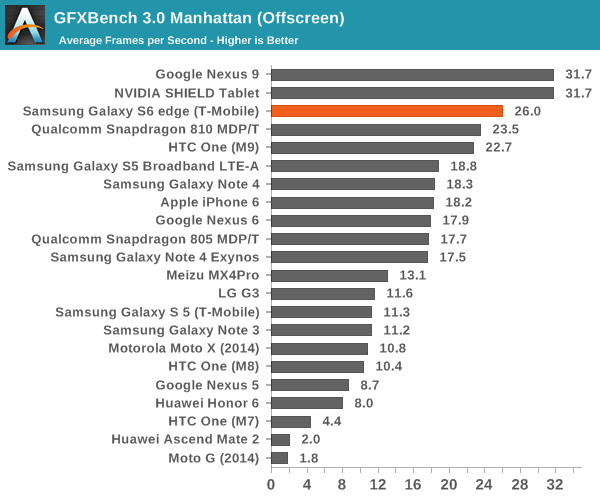
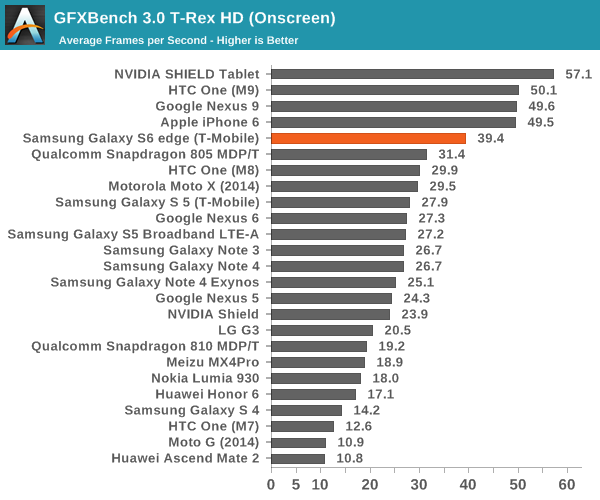
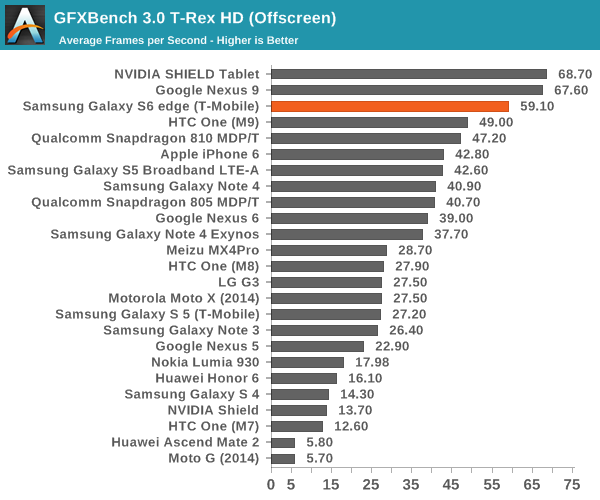
From the results the Mali T760MP8 GPU of the Exynos 7420 performs admirably in comparison to the Adreno 430 of the Snapdragon 810. We see a 10% lead over the Adreno 430 in Manhattan, growing to 20% in T-Rex. Qualcomm hinted that the Adreno 430 is more strongly improved in ALU performance over the Adreno 420, which would explain why the gap isn't as significant this generation. A 700 MHz clock on the Adreno 430 would likely equal to T760 in this case, but I suspect the power consumption of such a clock would be untenable. The Galaxy S6 does fall behind on the on-screen benchmarks due to the 1440p display compared to the 1080p display of the One M9, but rendering at a lower resolution would avoid most of these problems in real games.
Display
As previously discussed, the Galaxy S6 line introduces a newer generation of AMOLED displays, which is said to increase maximum luminance to 600 nits. Samsung claims that this was achieved with the use of new materials, which is likely necessary in order to sustain power efficiency improvements. It doesn't seem that AMOLED is uniquely suited to high resolution, but rather that Samsung Display Corp. is managing to dramatically improve how they make AMOLED displays with every year that offset power consumption increases from higher resolution displays. To find out how Samsung did, we use SpectraCal's CalMAN 5 Ultimate, in addition to X-Rite's i1Pro2 Basic to characterize displays as accurately as possible.
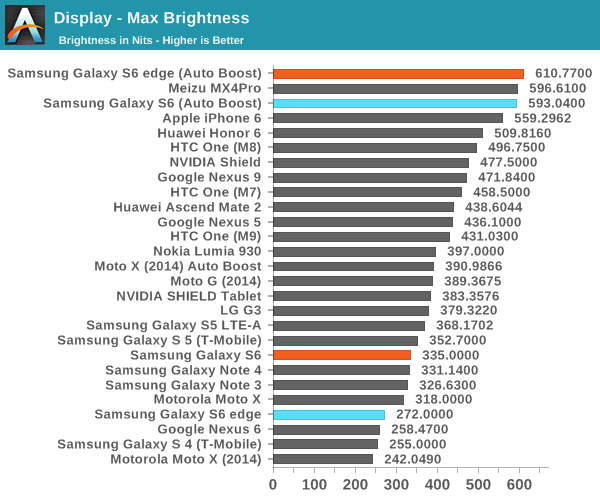
From the results Samsung's claims of a 600 nit display are valid in this case, which is a 100% APL white display. It's important to note that achieving this requires the use of auto-brightness, and that manual brightness is limited to a much lower brightness to reduce power usage, here the S6 sees similar maximum brightness as the S5. The S6 edge disappointingly only achieves 272 nits in this mode, a rather low value. I saw color balance shift dramatically in auto-boost mode, which suggests that this operating mode is likely less efficient than manual brightness. As an explanation, we've seen that colors are controlled in AMOLED by voltage while brightness is controlled by PWM (pulse width modulation). As with most recent AMOLED displays, there's no DC bias to the pixels so the contrast really is infinite instead of just a very large number when displaying black.
Galaxy S6
Galaxy S6 edge
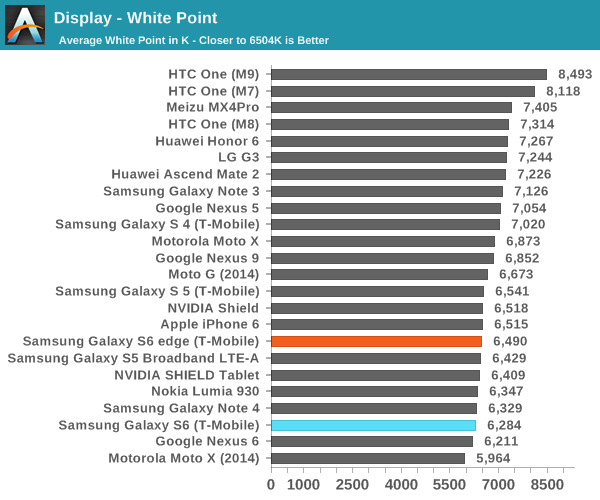
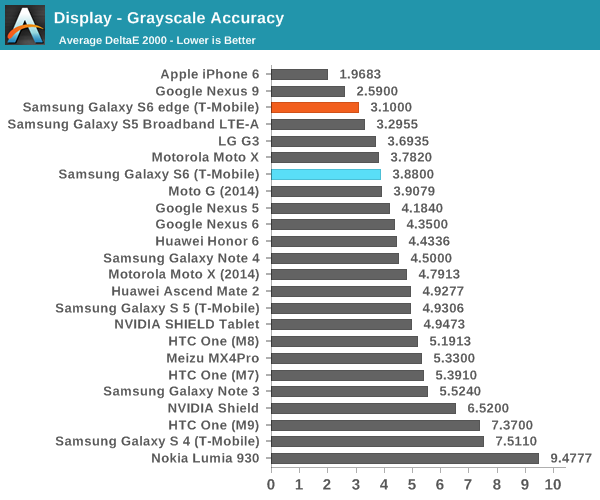
Moving on to grayscale, we can see that Samsung has done a pretty good job of controlling the white point and gamma across the saturation sweep, even if green is slightly dominant in both displays. We can also see that there is variation across displays as the S6 edge is closer to neutral while the S6 sample tends a bit warmer.
Galaxy S6
Galaxy S6 Edge
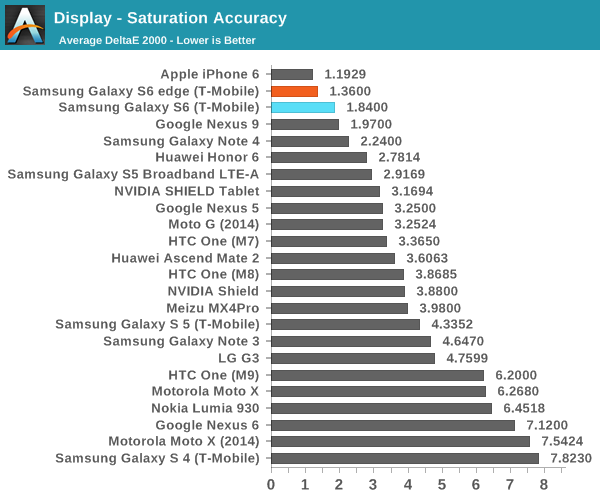
In the saturation sweep, both displays do an incredible job. I really don't have anything else to say here, because there's really no way to improve on the level of calibration Samsung has done on this display. Unless Samsung calibrates every single display in production, which is wildly impractical and effectively impossible to do, this is as good as it gets for a mass-produced device. Improving past this point will also be incredibly difficult to perceive, which means there's no real reason to go any further.
Galaxy S6
Galaxy S6 edge
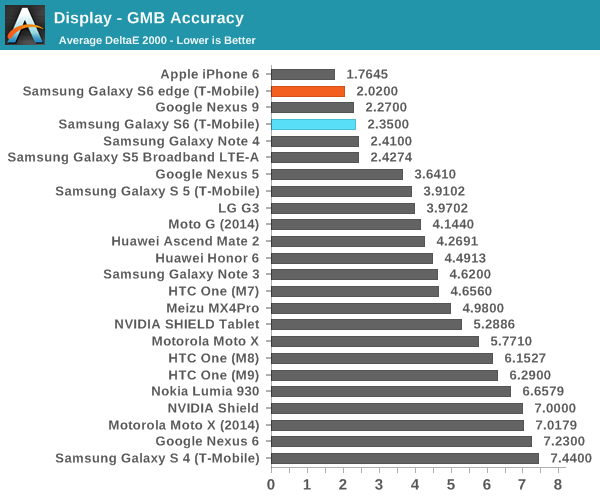
In the Gretag MacBeth ColorChecker, we can get an idea for overall color accuracy, which paints a picture similar to the saturation test. The only real problem I've noticed with these displays are the viewing angles, which can produce color shifting when the display is tilted. This is a bit of an issue on the edge variant as I can see that the edges of the display appear somewhat green when viewed head on, but otherwise there are no real issues to be seen here. Overall, this is probably the best display anyone will be able to get in a smartphone right now. This level of progress is amazing from Samsung, given just how bad things were with the Galaxy S' AMOLED display, even as recent as the display of the Galaxy S4. With the Galaxy S5 review, I said that I wouldn't be surprised to see AMOLED equal, if not exceed LCD within a year or two, and Samsung has managed to finally hit that mark.



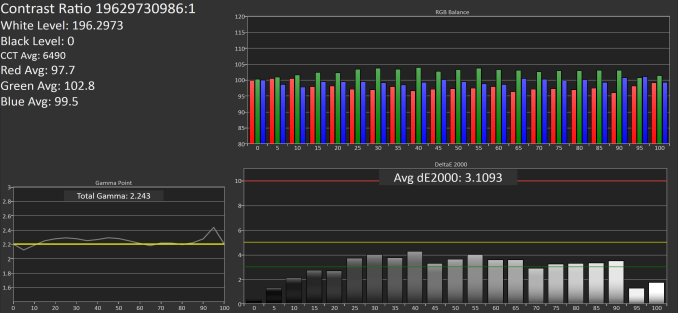
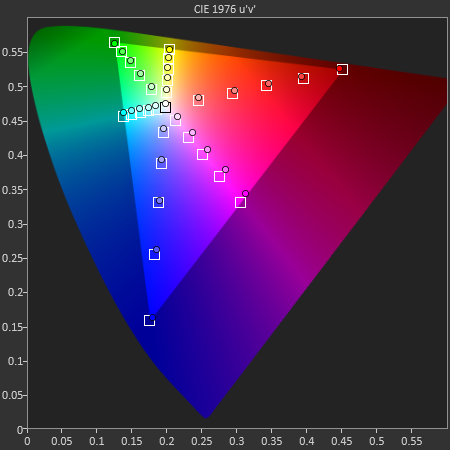
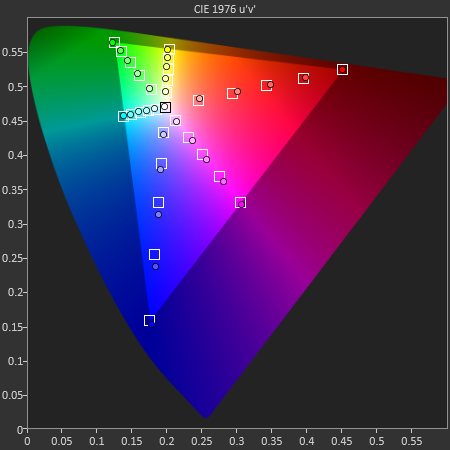
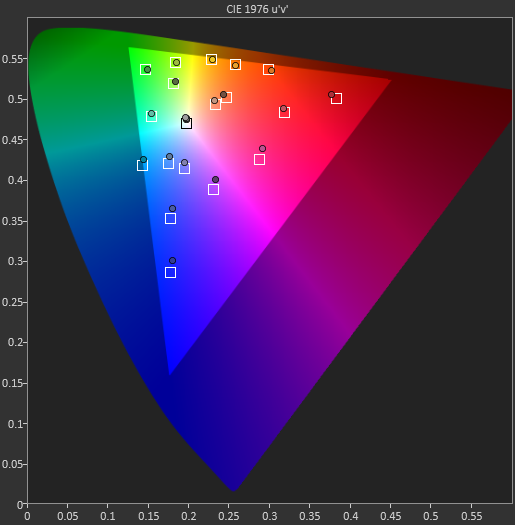









200 Comments
View All Comments
nyonya - Thursday, March 26, 2015 - link
What display mode were the display tests done in?JoshHo - Thursday, March 26, 2015 - link
This was done using Basic mode.lilmoe - Thursday, March 26, 2015 - link
It would be nice if you'd also post tests for AMOLED Photo in your final review.Some other things I'd love to see in the final review (if possible please):
- Your personal thoughts about battery life and not just your standard tests, especially for standby and how much % the phone consumes overnight while not charging. I feel that Anandtech reviews are too dependent on numbers and leave out a lot of subjectivity. A balance of both would be nice.
- Did Samsung include an option to set the resolution at 720p in dev options?
- We need a more professional look at the camera and its various modes under various conditions. One issue from my observation of online videos and smaples, it seems that the lens (though with great aperture) tends to "bleed" light in some *video* samples from bright sources (if that's the right term, like light rays from sunsets and direct car lamps), or is this issue mitigated with HDR? Most videos on youtube are done by amateurs who refuse to know the difference. I've actually thought it might be that some forgot to take off the plastic cover on the protective glass. These issues are only present in video, but not in still images.
mkozakewich - Thursday, March 26, 2015 - link
"We subjectively feel that the battery drains in 6 hours at 2 watts."There's really not much to talk about, subjectively. The battery drains at a certain rate when it's sleeping, and a certain rate while reading webpages, and a certain rate while playing games. That's what they seek to measure. They could possibly rethink their testing methodology for web browsing to stay in line with the ways people today use their phones, but historically they have updated their benchmarks like that.
lilmoe - Friday, March 27, 2015 - link
Battery life is one of the aspects of mobile devices that's impossible to accurately measure with absolute certainty, because your mileage differs by each and every use case. Total number of apps installed, signal strength, preferred screen brightness and user habits among various other things are never the same for each and every user. There's a LOT to be said.One could have better understanding of what to expect with more input. A Combination of synthetic tests, use case, standby time, and user opinion are great. It would also be nice to see the effect of installed apps on battery life (IE: with lots installed VS minimum amount of apps).
It's well known that low signal strength and having too many apps installed on Android devices affects standby time dramatically. This issue isn't as bad in iOS and Windows Phone because apps aren't as free to do background tasks compared to Android. "Project Volta" is Google's answer of sorts to this problem, but most apps (if any of the top 100) aren't taking advantage of that just yet, so one would assume it would only get better with time.
HaB1971 - Thursday, March 26, 2015 - link
I'll pass on Samsung this time.. styling change and a slightly better screen... not worth upgrading from an S5danbob999 - Thursday, March 26, 2015 - link
Why people keep saying that.It's never worth it to upgrade every year. These days even 3 year old smart phones run just fine for more people.
Refuge - Thursday, March 26, 2015 - link
Still running my One M7. I love the screen and the speakers are really great too.Batter lasts me a day of heavy use still, but it isn't quite as fast as my girlfriends LG G2, but hers is three gens ahead of mine, and the differences are barely noticeable. That and I run 8 different widgets, compared to her one (clock).
kspirit - Thursday, March 26, 2015 - link
I know right? I'm still using my 925, and it works good as day 1. As long as they keep getting software updates, why upgrade every year?XororovX - Thursday, March 26, 2015 - link
The one m7 and the lg g2 are both from the 2013 crop.